Attribution modeling vs marketing mix modeling

Table of contents
Marketing may no longer be the ineffable art it was in the past. It used to be the case that “marketing” was essentially a black box that you’d pour money into, hoping to see a sales increase at the other end. But these days, marketing, and especially digital marketing, has become highly focused on data, analytics, and determining the return on investment for initiatives launched under the marketing banner.
Marketing executives have become practically obsessed with tracking every dollar spent on ad campaigns, sponsorship, blogging, video content, social media, influencers, and other data points. It’s a healthy obsession, as long as the metrics being evaluated are sound. No stone is left unturned in the quest to attribute spent marketing dollars to lead generation and other sales-boosting efforts.
The eternal CEO question is, where did the marketing department’s budget go? Despite conscious efforts to stick to data-driven analysis with the goal of providing accurate and specific answers, attribution is still not where it should be. Part of the reason for that is an ongoing divergence of opinion over the type of measurement model to use.
Let’s take a deeper look into Attribution Modeling, its various subtypes, and another option called Marketing Mix Modeling, to see if we can discern which is the correct protocol for attribution measurement.
What is attribution modeling?
Attribution Modeling is the bottom-up approach to measuring marketing efficacy. It analyzes the paths users take toward conversion by examining data at every step along the process, attempting to identify the value of each individual marketing initiative component.
This method originated from the pressures and requirements of eCommerce, where all manner vast amounts of data are (and many believe should) captured and analyzed. For this reason, attribution modeling tends to focus on online sales, advertising, and other conversion efforts. As more and more marketers integrate their online and offline channels, attribution models must take a wider view to account for offline interactions that less easily yield their data.
The granular approach of attribution modeling means that data is analyzed frequently, in real-time, or as close as is feasible.
What types of attribution models exist?
Due to the wealth of available data and the vast number of marketing channels currently in use, there are several types of attribution models that can be applied by analysts. Depending on your business type and particular sales goals, each one has different strengths, weaknesses, and areas of focus.
1. Last interaction
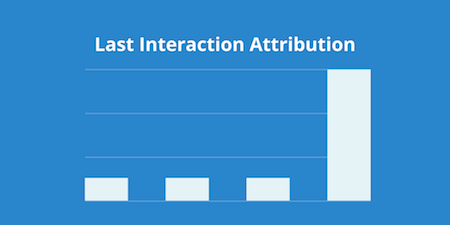
In the earliest days of eCommerce, the only model marketers had to go by was giving all the credit for a conversion to the last lead a user interacted with. For many analysts, it’s still the default method.
Here’s an example: a user sees a Google ad for your website while searching for a product. The next day, they remember your site and visit it directly. A week later, they see an ad you’ve placed on Twitter, decide to finally make a purchase, and then they click on the ad. The Twitter ad gets 100% of the credit for that sale.
Should it, though? That ad may have provided a helpful nudge to get them to complete the conversion process, but didn’t they learn about your company from the Google ad first? Could the reason the Twitter ad was effective, have been that the content and design of your website made a good impression when the user visited it independently?
As you can see, there are certainly issues not being considered in this particular model.
2. First interaction
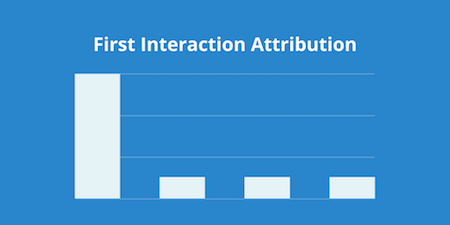
This model assigns all the credit to the source of the user’s first introduction to your business.
Using the previous example, in this model the Google ad would have been credited with the conversion. It would receive the credit no matter what other ads, sponsored content, or social media posts the customer interacted with between seeing that first Google ad and making their purchase.
3. Last non-direct click
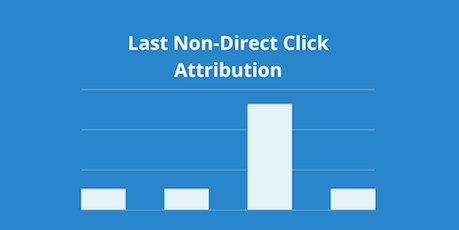
Like the last two models, this one awards all credit to a single interaction. The difference is that the Last Non-direct Click model reasons that any direct interactions, such as when a user goes straight to your website by typing the URL, should not get any credit. In this model, those actions only represent the user remembering that your site exists because of exposure to previous marketing efforts.
An example of Last Non-direct Click would be a user clicking on a Facebook ad for your product, then, the following day, the user decides to check out your site and order something. Under the last non-direct click attribution method, the Facebook ad gets credited with the successful conversion.
4. Linear attribution
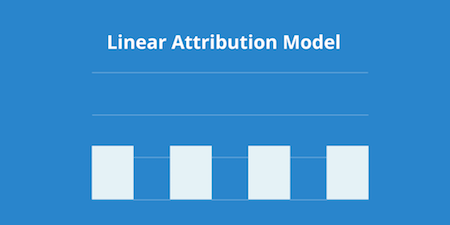
This model divides the credit up equally among all the interactions a user had before conversion.
Using Linear Attribution in our initial user example, 33% of the credit would go to the Google ad, 33% to the content and design of your website, and 33% to the Twitter ad.
This model is simple and fair (in a way), but if you’re going to apportion out the credit, does it make sense to assume that each interaction was equally influential?
5. Time decay attribution
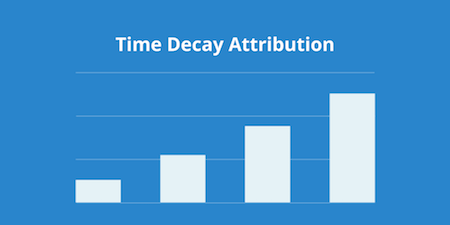
This evocatively-named model builds on the linear attribution model. It factors in when each interaction took place and assigns greater importance to interactions that occurred closest to the time of purchase. While it can be helpful to focus on the marketing pushes that motivate customers to close the deal, this model still relies on some unknowable assumptions.
For instance, in our initial example, the time decay model would place the greatest value on the Twitter ad. To the customer, that ad might have served only as a simple reminder that they already knew and liked your company. Any other mention of your company anywhere else might have had the same effect on them. Based on that analysis, it wouldn’t necessarily be effective to invest more heavily in Twitter ads.
6. U-shaped attribution (position-based attribution)
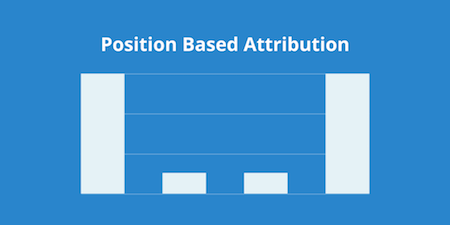
Also known as position-based attribution, this model takes yet another split-the-difference approach to allocating conversion credit. It gives 40% to the first interaction, 40% to the last interaction, and 20% to be divided among all the interactions that took place in between. You can imagine this model plotted as a U-shaped graph, thus the name.
Other attribution models
These are the six most often used attribution models. There are other attribution models that can be derived by modifying these basic concepts or limiting them to specific marketing channels. As you can see from the previous descriptions, each can be fairly limited in how it attributes a conversion, and the derivative models further silo the results.
However, there is another type of model we can use that originated with traditional, offline marketing: Marketing Mix Modeling.
Recommended for further reading
What is marketing mix modeling?
Marketing Mix Modeling developed in the retail sector. In this model, businesses attempt to measure the success of marketing activities like TV, radio, print ads, and promotional efforts at the point of sale. Unlike attribution modeling, it deprecates real-time analysis in favor of performing annual, biannual, or quarterly analysis using aggregated historical data.
Rather than focusing on user interactions, marketing mix modeling takes more of a top-down, macro-level view. It draws on marketing and sales data, revenue, benchmarks, costs, and outside factors. Outside factors include economic and market conditions, competitors, profit margins, and anything else that might influence consumer behavior.
Let’s look closer, and see how it works.
How does the marketing mix model work?
The “mix” in marketing mix refers to four key marketing elements: product, price, place, and promotion. Through marketing mix modeling, the hope is to discover the optimal mix of these four elements to meet your company’s objectives. It does this by taking data from all the factors that may be influencing the success of your marketing channels and performing a regression analysis.
A regression analysis evaluates the impact of multiple independent variables on a single dependent variable, such as your sales figures. It plots these variables on a chart, then calculates a “regression line” that attempts to explain the relationship between the independent variables and the dependent variable.
In theory, the line should illustrate how much your sales are affected by each component of your marketing strategy. The marketing mix model is intended to help you “zoom out” to see the bigger picture of how effectively all your marketing channels are working together.
What’s the best model for your business?
The main advantage that marketing mix models have over attribution models is that they can account for a wide range of data.
This makes marketing mix a good choice for businesses that have:
- Several different marketing channels.
- An online and a brick-and-mortar presence.
- A diverse selection of products or locations.
- Complex sets of marketing data to evaluate.
For businesses that have a simpler, straightforward marketing strategy to measure—an online retailer with relatively few marketing channels, for example—attribution modeling may be sufficient. This is because it’s an easier analytic process, and does not need to account for the impact of multiple concurrent marketing channels.
Conclusion
Compared to the mysterious marketing of the past, businesses are much better off having the ability to perform rigorous data analysis that shows exactly what works and what doesn’t. These attribution models will point you in the direction of the questions you should be asking, and the marketing avenues you should be exploring.
Remember that while these models are driven by data science, there’s still an art to building and understanding them correctly. Your results are only as good as the data they’re based on, and it’s always possible to confuse correlation with causation when interpreting them. Intuition still matters, and unusual results should be investigated thoroughly.
Selecting a model that accurately attributes credit for sales to specific marketing activities can be challenging, but there’s no denying the value of being able to clearly quantify the return on your marketing investments.




